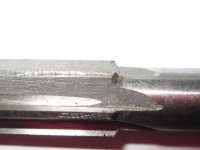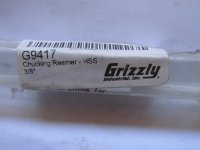I posted about this a few days ago but thought a few pics might be helpful. This worked so well that I am still happy about it. No need for that expensive tool; an inexpensive $20 tool did the job well. Hope this helps someone else without lots of fancy equipment.
The chucking reamer worked very well using the existing throttle shaft bore as a guide. The shaft on the Grizzly reamer is exactly 5/16" diameter, which is perfect for running in the worn existing bore, while cutting a new 3/8" hole with the reamer. The key was to sharpen the reverse end of the flutes to turn them into cutting teeth; it is not intended to work that way, but it does work well when sharpened at that end. Also, one does not want to go all the way through; only go far enough so that the new bushing will fit completely into the hole. Then one can use the rest of the orignal 5/16" bore to act as a guide for the other side. Don't insert the new teflon coated bushings until both sides are reamed out.
The important thing is that the 100-6 now purrs like a kitten, without air leakage at the throttle shafts, and no leaks noted. The new throttle shafts, butterflies, bushings, jets, and jet sealing parts in the master rebuild kit did come in useful. A number of the other parts in the kit did not fit the H4 carbs. I guess that is what one gets with universal kits.
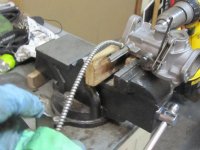
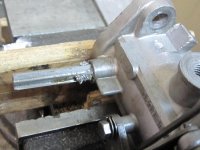
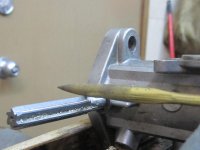



The chucking reamer worked very well using the existing throttle shaft bore as a guide. The shaft on the Grizzly reamer is exactly 5/16" diameter, which is perfect for running in the worn existing bore, while cutting a new 3/8" hole with the reamer. The key was to sharpen the reverse end of the flutes to turn them into cutting teeth; it is not intended to work that way, but it does work well when sharpened at that end. Also, one does not want to go all the way through; only go far enough so that the new bushing will fit completely into the hole. Then one can use the rest of the orignal 5/16" bore to act as a guide for the other side. Don't insert the new teflon coated bushings until both sides are reamed out.
The important thing is that the 100-6 now purrs like a kitten, without air leakage at the throttle shafts, and no leaks noted. The new throttle shafts, butterflies, bushings, jets, and jet sealing parts in the master rebuild kit did come in useful. A number of the other parts in the kit did not fit the H4 carbs. I guess that is what one gets with universal kits.







 Hi Guest!
Hi Guest!

 smilie in place of the real @
smilie in place of the real @
 Pretty Please - add it to our Events forum(s) and add to the calendar! >>
Pretty Please - add it to our Events forum(s) and add to the calendar! >> 

